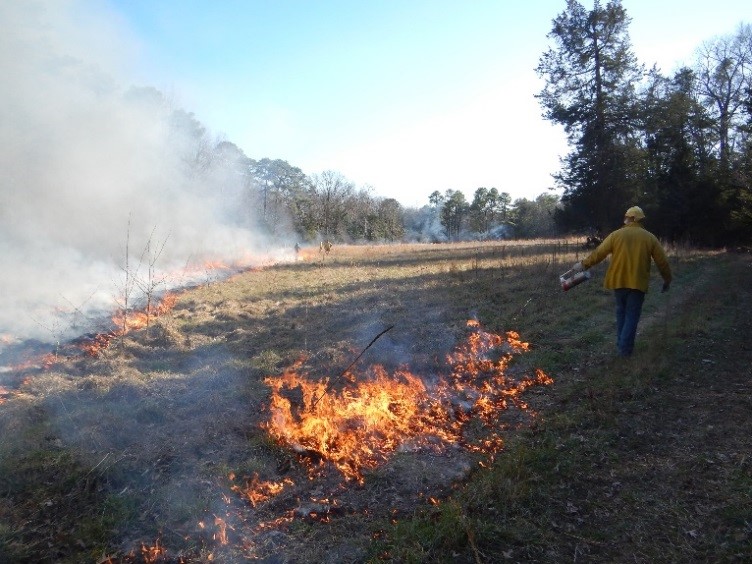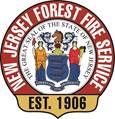|
FOR IMMEDIATE RELEASE |
Contact: Caryn Shinske (609) 984-1795 |
|
NEW JERSEY STATE FOREST FIRE SERVICE PRESCRIBED BURNING PROGRAM (18/P009) TRENTON – The New Jersey State Forest Fire Service seasonal prescribed burning program is under way. The annual program reduces wildfire risk by burning the buildup of potential fuels such as undergrowth, leaves, branches and pine needles on forest floors. Forest Fire Service personnel use best management practices to control smoke impacts during the burns, but nearby residents and visitors should expect to see large plumes of smoke and may experience temporary impacts from smoke.
“Since 1906, the Forest Fire Service has protected property, lives and infrastructure by creating defensible space and strategic fire breaks near developed areas,” said Greg McLaughlin, Acting Chief of the New Jersey Forest Fire Service. “These prescribed burns help prevent wildfires, reduce the intensity of these fires, and provide a foundation for safer, more effective fire suppression and protection operations.” Prescribed burns, also known as controlled burns, will continue through the end of March, weather conditions permitting. The burns are generally conducted during late winter months to reduce the amount of smoke produced and when weather conditions tend to be safer for controlled fires. The State Forest Fire Service works to provide as much public notice as possible regarding areas where prescribed burns are to take place. To sign up for text or email notifications of prescribed burns, visit: https://public.govdelivery.com/accounts/NJDEP/subscriber/new The New Jersey Division of Parks and Forestry also provides notice through its Facebook page: www.facebook.com/newjerseyforests When in doubt about the source of smoke or if a fire is part of a prescribed burning operation, call 9-1-1 or 1-877-WARN-DEP (1-877-927-6337). Prescribed burns help reduce forest fire risk before prime wildfire season, which typically begins in early spring when fallen leaves, branches and twigs are abundant. In addition, spring is likely to be dry, windy and warm. These weather conditions coupled with lack of new leaf growth makes forest debris more susceptible to the drying effects of wind and sun.
This season, the Forest Fire Service expects to conduct prescribed burns on approximately 30,000 acres. Most burns will occur on state-owned property such as state forests, parks and wildlife management areas, and other government lands. The service also will place increased focus on assisting private landowners and nonprofit organizations mitigate wildfire risk. In 2017, the Forest Fire Service responded to 753 wildfires, 74 percent of which were a quarter acre or smaller. The largest was a 3,477-acre fire in Wharton State Forest, Burlington County. During prescribed burns, Forest Fire Service personnel use handheld torches to set smaller fires to burn away fallen leaves, pine needles, fallen branches and other debris on the forest floor. Personnel consider wind, moisture and other conditions in setting the fires, which do not reach the forest canopy or cause significant loss of mature trees in the way that wildfires do. In addition to burning away materials that can fuel wildfires, prescribed burns help keep forest ecosystems healthy by improving wildlife habitats, managing competing species of plants and trees, controlling insects and disease, and recycling important nutrients into the soil. The public may contact one of the State Forest Fire Service’s three Division office at www.nj.gov/dep/parksandforests/fire/contactus.html to learn more about the prescribed burns program and where burns are expected to be conducted. To learn more about wildfires in New Jersey, steps to protect property, and other resources, click on the Forest Fire Service logo above or visit: www.njwildfire.org DEP Photo/Ken Badger ### |
|
 Motorists are also reminded to use caution when approaching areas where prescribed burns are taking place. Motorists traveling through these areas are advised to observe posted reduced speed limits, and to be alert to the presence of trucks and Forest Fire Service personnel.
Motorists are also reminded to use caution when approaching areas where prescribed burns are taking place. Motorists traveling through these areas are advised to observe posted reduced speed limits, and to be alert to the presence of trucks and Forest Fire Service personnel. 